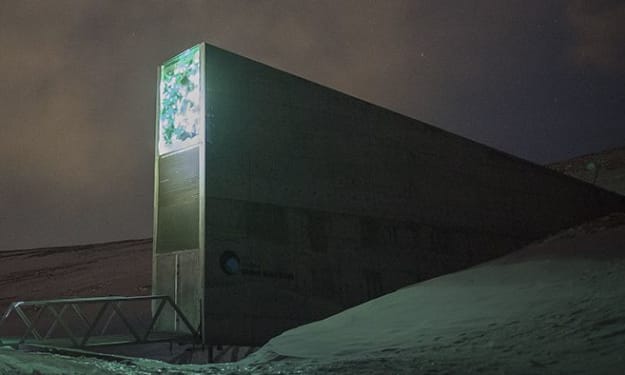Five Unsolved Mysteries of Ancient China that are being glossed over
The Five Most Mysterious Unsolved Mysteries and Enigmas of Ancient China: from the enigmatic pyramids to the mystery of the Great Wall of China and the mysterious Terracotta Army

Perhaps the most mysterious legacy of past civilizations on Earth is rightfully considered to be the pyramids, which can be found in different parts of the world. In one of my videos, I already told you about many questions that the pyramids of Egypt pose to specialists, but at least as many questions are raised by the pyramids built in China. While the Egyptian pyramids are more or less accessible for research, the Chinese ones remain closed to the general public to this day.
The most surprising thing is that the public only learned about the Chinese pyramids in the mid-20th century when an American pilot accidentally discovered them during World War II while returning from another mission. It wasn't until 1994 that an archaeologist from Austria, Hartwig Hausdorf, received official permission from the Chinese authorities to travel to areas closed to tourists. At first, he discovered six giant pyramids, but his surprise knew no bounds when he spotted more than 100 pyramids in the distance. However, even in China, few people know about the existence of these monuments. They are located in forbidden military zones or hard-to-reach places.
The Chinese government confirmed the existence of about 400 pyramids only in 2000, stating that the pyramids are merely tombs of ancient Chinese rulers. The largest of them is called the Great White Pyramid. According to experts, its height exceeds 300 meters, while the height of the Great Pyramid of Giza is only 147 meters. The age of the pyramids is unknown, and the local residents naturally cannot provide any clear information about them. Scientists managed to find the diaries of two Australian traders who visited that area in 1912. They met an old Buddhist monk who said that the pyramids are mentioned in extremely ancient records kept in his monastery. These records are about 5000 years old, but even then, the pyramids were referred to as very old, built during the time of ancient emperors who claimed to be descendants of the sons of heaven.
Naturally, the question arose whether there was a connection between ancient cultures. For example, the name of the capital of the Shaohao empire, Sulfu, is phonetically similar to one of the names of the Pharaoh Khufu, also known as Cheops. Perhaps the same ancient builders who belonged to one civilization contributed to the construction of the pyramids. In any case, such theories do not seem incredible, and the question remains whether the Chinese authorities will allow the mysterious pyramids to be studied.
In 1999, a local farmer stumbled upon strange caves in Anhui Province. These caves, later named the Huashan Caves, turned out to be incredibly large and artificial. The most surprising thing is that there is not a single mention of these unique structures in historical chronicles, and it is still unclear who created them and for what purpose. If we assume that ore was mined in the caves, why do they look so much like temples? Why were they equipped, and what really happened in the caves?
The largest cave became known as the Underground Palace. Imagine its size: 12.5 thousand square meters. The masters of the past built stone bridges over a river, staircases, passages, pools, and large columns. This raises another question: where did the stonecutters dispose of so much stone and ore that the mountain became almost hollow after construction? Moreover, local peasant houses are mostly built of blue stone, but none of them are built from cave stones. Also, these caves lack wall paintings or Buddhist deities, so it doesn't seem like they served any cult purposes.
There is another intriguing feature: the Huashan Caves are located on the 30th parallel north. This is the same parallel where the mysterious Mount Kailash in Tibet, the Bermuda Triangle, the Great Pyramids of Egypt, and other mysterious and anomalous points of the planet are located. How coincidental is this alignment?
The Great Wall of China, according to the classic version, was built starting from the 3rd century BC, almost 2000 years, and stretches for nearly 9 thousand kilometers. It was built to define the country's borders and protect China from nomadic raids. Initially, slaves, prisoners, and soldiers were used for construction, building it literally to death. But recently, some scientists have questioned this traditional version, and their doubts were not unfounded.
These scientists argue that as a defensive structure, the wall makes no sense because it is so long that it would be nearly impossible to set up defensive posts along its entire length. There wouldn't be enough military strength. Also, why does the wall run along the ridges of inaccessible mountains and hills where not even nomads, let alone a professional army, could reach? Another suspicious fact is that it is still unclear when this great defensive structure was first mentioned by ancient historians.
Moreover, some modern skeptics strongly doubt that the Great Wall existed before the mid-20th century. They believe that what tourists are shown was built by Chinese communists. Tourists are usually shown a section of the Great Wall located 60 kilometers from Beijing, spanning 50 kilometers. But many non-tourist sections of the wall raise serious questions. Look at how the wall appears in these non-tourist areas. For example, here's a section of the wall in Gansu Province, and this one is in Ningxia. They do not look at all like how people imagine the Great Wall.
Finally, another inexplicable oddity is the placement of the arrow slits. They should be facing north, where attacks from nomads were expected, allowing defenders to shoot through them. But many of them face south, towards China itself. Based on these arguments, opponents of the traditional history suggest that the Great Wall of China was built much later than the previously indicated time, and its specific purpose is still not fully determined.
The next unique find is rightfully called the eighth wonder of the world. In 1974, during excavations near Xi'an, archaeologists discovered the so-called Terracotta Army: more than 8,000 terracotta sculptures of people, warriors, and horses in life-size, guarding the tomb of Emperor Qin Shi Huang. During the excavations of the Terracotta Army, scientists made another, more frightening discovery. They found the remains of 70,000 workers and their families. This was apparently done to preserve the secret of the terracotta army's creation.
It is amazing that out of 8,000 sculptures, there are no two alike. Each figure has its own individual features, armor, and even facial expressions. To this day, it is unknown where these figures, each weighing about 135 kilograms, were made. Specialists found out that first, the sculpture was given the necessary shape, then it was fired. But to produce such a large number of high-quality sculptures, a highly developed production was needed. It is hard to imagine something like this over two thousand years ago. The technology of weapon manufacturing is also impressive: for two thousand years, it has not dulled or lost its shine. Europeans reached such technologies only at the beginning of the 20th century.
But the most interesting thing is that at some point, the Chinese completely halted the excavations. Officially, they refer to the desire to preserve their cultural heritage. And for several decades now, scientists have been unable to reach the tomb of the emperor, and it is unknown how long this situation will continue.
The next unique discovery is neither a hoax nor photoshopped, and it was widely covered on Chinese television. In 2008, Chinese archaeologists discovered a 400-year-old tomb from the Ming Dynasty, untouched by looters. Inside, they found a massive stone coffin. Excavations were carried out very carefully, removing the earth layer by layer. At some point, next to the coffin, scientists came across a strange metal object. After removing the dust from the new find, scientists realized it was a miniature watch. The most amazing thing was that on the back of the dial was the inscription "Swiss."
This meant that the watch from the tomb was Swiss, yet watches of this kind would not appear on the market for another couple of centuries. The frozen hands indicated the time 10:06. Initially, the scientists were disappointed by the find, as the presence of a miniature watch clearly indicated that the tomb had already been opened in modern times. The assumption that the watch was placed at the time of burial was immediately dismissed. Wristwatches began to be manufactured only in the 17th century, and there was no mention of such miniature watches at that time.
However, an examination conducted in Beijing to determine the age of the watch shocked the specialists. It turned out that their age corresponded to the truth: they had lain in the tomb for 400 years. This artifact stumped scientists. Apart from the idea that the watch had traveled through time, its presence in the tomb could not be explained. To this day, scientists cannot give a definitive explanation of how Swiss watches of an unusually small size ended up in an ancient tomb. Moreover, no scientific report on this find has been published. After the initial findings, all research on the watch was classified.
About the Creator
Enjoyed the story? Support the Creator.
Subscribe for free to receive all their stories in your feed. You could also pledge your support or give them a one-off tip, letting them know you appreciate their work.





Comments
There are no comments for this story
Be the first to respond and start the conversation.